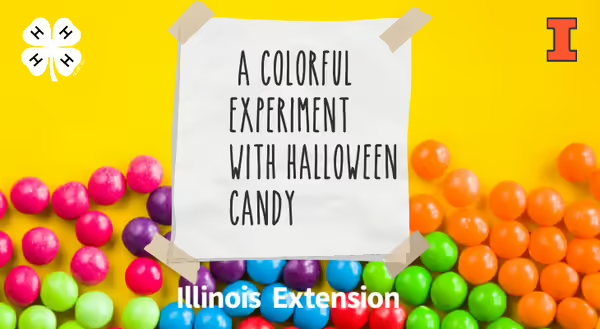
Halloween is here and that means lots and lots of candy! We had many creative ways of getting rid of some of the excess candy in our house, but probably the way the kids liked best (other than getting paid to get rid of it) was Halloween Candy Experiments. Here is one of our favorites:
Skittles® Kaleidoscope
For this activity, you need about 30 Skittles®, a white plate and some warm water. Arrange the skittles in a pattern around the outside of the plate in a circle. Make a prediction about what you think will happen to the Skittles®. Then slowly add warm water to the center of the plate. Be careful not to add too much water and not to pour it too fast because you don’t want to move the Skittles®. Observe what happens – it can be fun to have the kids draw or write about what they are observing.
-
Why does this work?
- The main science principle at work is called diffusion. Basically, the water is causing the sugary colored coating of the skittles to diffuse or spread apart from an area of higher concentration to lower concentration (concentration gradient). The sugar from the coating and the dye are moving toward the center of the plate to an area of less sugar concentration. The reason the colors do not blend is because their concentration of sugar is the same.
-
Ideas to expand the learning:
- Time how long it takes the colors to get to the center of the plate with warm water and cool water.
- Try different kinds of candies with a hard colored coating – see what happens to them.
- Try different kinds of liquids such as milk, vinegar, soda.
- Try different shapes and patterns with the candies
For detailed instructions on this experiment, check out Find the Candy Rainbow with Chemistry, from Scientific American. If you still have leftover skittles, Purdue Extension has a Candy Chromatography experiment that looks at the differences in the dyes and their reaction to a salt solution.
MEET THE AUTHOR
Judy Schmidt provides leadership to 4-H metro programming in Peoria County. Schmidt joined Extension in 2001, working as a Youth Development Educator at the East Peoria Center and joined the Fulton-Mason-Peoria-Tazewell Unit in 2011. Her work focuses on 4-H youth development programming in the local metropolitan area, specifically leading positive youth development initiatives for after-school programs, community groups, 4-H clubs and other youth-serving organizations. Her areas of expertise include positive youth development principles, youth leadership, and work with teens as teachers.
Schmidt attended the University of Illinois at Urbana-Champaign for her bachelor's degree in psychology and also for her master's degrees in Social Work and Marriage and Family Therapy. She is a certified facilitator of the Matrixx System/Real Colors program by the National Curriculum and Training Institute.
ABOUT THE BLOG
Connection Corner is a blog that provides timely information, activities, and resources to help you stay connected to loved ones, the world around you, and yourself.